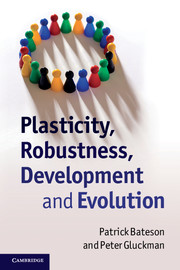Book contents
- Frontmatter
- Contents
- Preface
- Acknowledgements
- 1 Setting the scene
- 2 Clarifications
- 3 Developmental robustness
- 4 Plasticity
- 5 Integration of robustness and plasticity
- 6 Current function of integrated developmental processes
- 7 Evolution of developmental processes
- 8 Impact of developmental processes on evolution
- 9 Development and evolution intertwined
- References
- Index
9 - Development and evolution intertwined
Published online by Cambridge University Press: 05 August 2011
- Frontmatter
- Contents
- Preface
- Acknowledgements
- 1 Setting the scene
- 2 Clarifications
- 3 Developmental robustness
- 4 Plasticity
- 5 Integration of robustness and plasticity
- 6 Current function of integrated developmental processes
- 7 Evolution of developmental processes
- 8 Impact of developmental processes on evolution
- 9 Development and evolution intertwined
- References
- Index
Summary
One of the most remarkable characteristics of multicellular organisms is the way in which a single seed or a fertilised egg ends up as a fully functional complex organism, bigger in size by orders of magnitude. Science has been slow to uncover the processes involved in these remarkable transformations. As in all such inquiries, simplifications are necessary as aids to discovery. To modern eyes, some of these simplifications seem ridiculous. For example, the microscopists of the late seventeenth century convinced themselves that they could discern in the head of a human sperm a tiny homunculus – a miniature version of the adult. Everything was preformed and development was simply a matter of getting larger. The preformationists were opposed by those who believed in the emergence of an organism from an undifferentiated state. The tiny organism required interaction with the world around it if it was to develop successfully. This was known as ‘epigenesis’ – a term similar to modern ‘epigenetics’ which has, however, acquired a different meaning.
The next level of simplification is that the organism's characteristics require two sources of instruction: one from within and one from without. For most people, that is where understanding has not advanced. As noted at the beginning of this book, simplistic dichotomies abound: genetics or the environment, nature or nurture? The organisation of the brain is hard-wired or it is changeable. Development of the phenotype is robust or it is plastic.
- Type
- Chapter
- Information
- Plasticity, Robustness, Development and Evolution , pp. 123 - 132Publisher: Cambridge University PressPrint publication year: 2011



